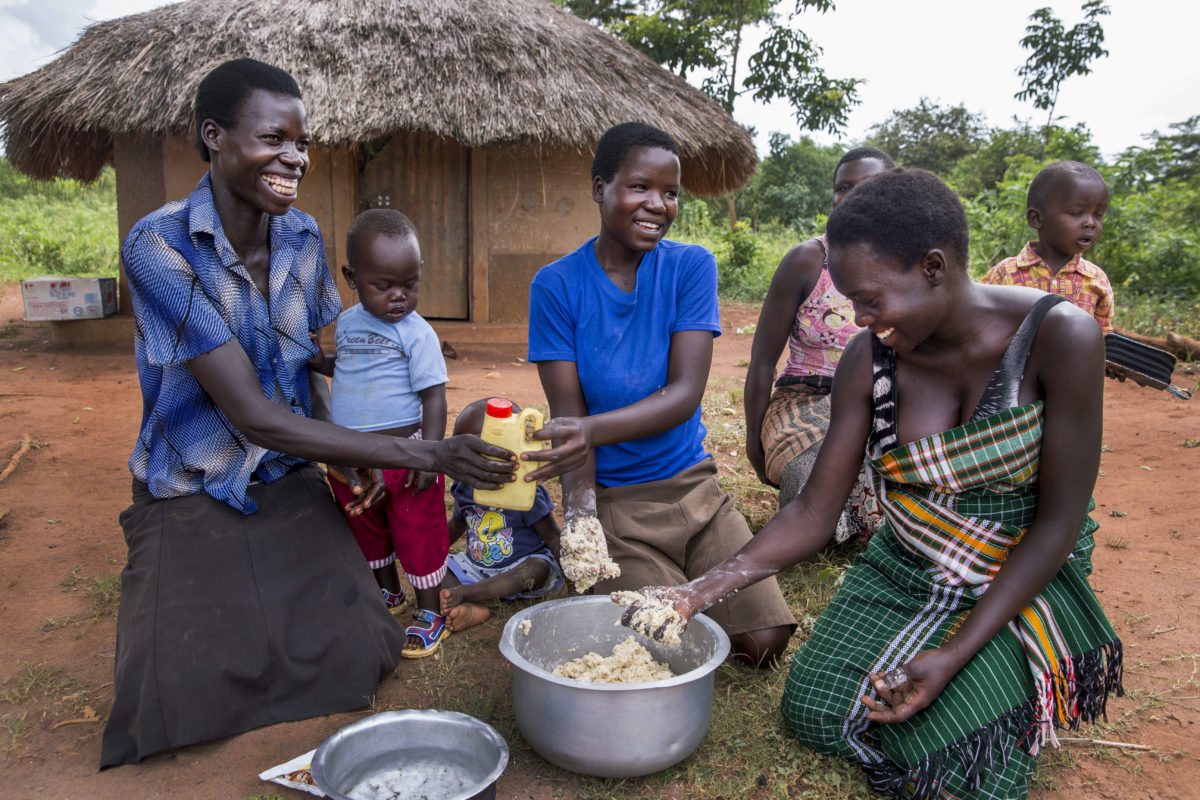The Nutrition Year of Action in Review: 5 Things that Give Us Hope

It’s easy to be pessimistic about the current state of global nutrition. Malnutrition still kills more kids in an average year than the population of Chicago, and leaves millions more with permanently stunted brain development and life-long health problems. COVID-related disruptions to food and health systems have exacerbated these numbers, with experts predicting that by the end of 2022 we’ll see an additional 13.6 million cases of wasting, the most deadly type of malnutrition. To top it all off, experts are now saying that we’ve been underestimating how much it will cost to reach our global nutrition targets, and that with the additional demand from the pandemic we now need to mobilize at least $10.8 billion every year just to stay on track.
On December 8, the 3rd Nutrition for Growth Summit wrapped up the 2021 Nutrition Year of Action, a pledging event that could not have come at a more urgent time. And despite all the challenges ahead, we want to take a moment to celebrate some of the things that give us hope as we conclude the Nutrition Year of Action and move into 2022. Here are our top five:
- Breadth and depth of high-burden country commitments
As N4G hosts, the Government of Japan created an inclusive environment that helped encourage and support governments to prepare bold commitments to accelerate progress on the nutritional issues in their countries. This support helped facilitate new commitments from 70 countries with a high burden of malnutrition. Commitments ranged from financial, policy, programmatic, and impact to cut across the five themes of the Summit: Health, Food, Resiliency, Financing, Data/Accountability. This is great news, in part because steadily increasing domestic resource mobilization is a key component of nutrition financing models toward the WHA targets. We are hopeful that the large number of new commitments from high-burden countries will help offset the rising cost of these interventions.
- New vehicles for innovative financing
Donors are increasingly turning to innovative financing mechanisms to fill funding gaps and leverage new funding streams. One great example is the Nutrition Match Fund launched this year by the Children’s Investment Fund Foundation (CIFF), UNICEF, and the Bill & Melinda Gates Foundation. The fund helps to mobilize domestic resources for nutrition by providing a 1-to-1 match for any money governments spend on essential tools to combat undernutrition such as purchasing ready-to-use therapeutic foods to treat wasting. The fund has unlocked nearly $4 million of incremental domestic resources, and is already attracting additional donor investment. We are hopeful that advancements like this one in nutrition supply financing will help prevent supply chain disruptions and offer one solution for the low coverage rates of many nutrition interventions.
- Progress on UN wasting treatment reform
An update to the UN’s wasting management protocols has been a long time coming. The reform process began in 2020 with the launch of the Global Action Plan (GAP) on Child Wasting. Though the GAP fell short of expectations in many ways, we are heartened by the steps the UN has taken to advance this work in 2021, including releasing operational country roadmaps for the GAP. Another step forward is the WHO and UNICEF’s ongoing evidence review to update global and national guidelines on wasting treatment. This review will reflect the growing evidence that there are simpler, cheaper, and more efficient ways to detect and treat wasting to open the door for reaching more children.
- Nutrition accountability at the forefront
One of the major outcomes from the 2021 Nutrition Year of Action is the launch of the Global Nutrition Report’s (GNR) Nutrition Accountability Framework (NAF). The NAF is the world’s first comprehensive accountability platform for nutrition, helping to ensure all commitment-makers put their promises into tangible action. Commitments must be SMART and align with national nutrition plans. The platform inspires bold and measurable commitments that drive progress on nutrition. At 1,000 Days, we believe holding ourselves and our leaders accountable is a crucial component of scaling evidence-based nutrition interventions.
- Renewed US leadership in the global nutrition space
In 2019 – the lead-up to the original 2020 N4G dates – the US was pulling back from international obligations and seemed unlikely to make any sort of substantial commitment at N4G. By December 2021, the US has not only publicly committed up to $11 billion over three years to combat global malnutrition, but sent USAID Administrator Power to make the announcement. The commitment builds on the Biden Administration’s repeated nods to the importance of good nutrition, especially in the wake of the pandemic. Though it is still unclear how the US will fulfill its financial commitment and how much (if any) of the $11 billion is new money, US commitments throughout the Nutrition Year of Action signal its plans to remain at the forefront of the fight against global malnutrition. As the sector’s largest donor, and in the face of a notable lack of commitment from the UK, US leadership will be a key component of any successful nutrition effort. As advocates continue to socialize the Nourish the Future proposal in 2022, the Administration’s demonstrated commitment to global nutrition is a welcome signal for more to come.
On top of these successes, we saw a host of other positive developments for nutrition, such as the addition of multiple micronutrients to the WHO Essential Medicines List, a growing adoption of the new OECD DAC nutrition policy marker, and the recent release of the Global Financing Facility’s Nutrition Roadmap. Ultimately, Summit participants from around the world pledged over $27 billion toward global nutrition at a time when donor fatigue is high and every country in the world is facing outsized domestic challenges. 2021 was a year of setbacks in our fight against malnutrition, but the new tools and resources coming out of the Nutrition Year of Action give us hope that the state of global nutrition will look better in 2022 and beyond.
